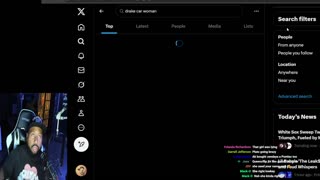Premium Only Content

Pipeline Blasting
Pipeline blasting, particularly for clearing or trenching during pipeline construction, employs controlled explosions using high-velocity explosives like ANFO (ammonium nitrate/fuel oil) or emulsified nitrate-based charges, precisely loaded into boreholes drilled along the intended path.
These charges are detonated in carefully timed sequences (millisecond delays) to fracture rock or frozen soil while minimizing shock damage to surrounding areas.
The logistics involve blast pattern planning, vibration monitoring, and coordination with heavy equipment for rapid debris removal post-blast.
One of the largest such operations occurred during the construction of the Trans-Alaska Pipeline System, where over 800 miles of rugged, often frozen terrain were cleared, including massive blasting efforts through permafrost and mountainous rock in sections like Atigun Pass—the highest point of the pipeline—requiring extensive logistics coordination and cold-weather explosive handling protocols.
-
 10:47
10:47
Nikko Ortiz
1 day agoThese Tik Tok Clips Are Extremely Painful...
37.7K4 -
 13:43
13:43
GritsGG
12 hours agoI Made a Brand New Warzone Account! Will I Get Bot Lobbies?
1.69K -
 1:09:23
1:09:23
The HotSeat
12 hours agoTrump’s Parade = Mocked, China’s Parade = Praised: Leftist Hypocrisy EXPOSED
26.1K33 -
 LIVE
LIVE
Lofi Girl
2 years agoSynthwave Radio 🌌 - beats to chill/game to
208 watching -
 4:34:26
4:34:26
Akademiks
6 hours agoICEMAN EPISODE 3
148K -
 2:04:10
2:04:10
Inverted World Live
8 hours agoThe Robots Are Here | Ep. 103
61.6K15 -
 1:21:53
1:21:53
Man in America
16 hours agoInflation, Debt & War: The 2032 Crash Cycle Is Here—Nations Will FALL w/ Martin Armstrong
58.1K20 -
 1:53:48
1:53:48
Adam Does Movies
15 hours ago $3.13 earnedTalking Movies + Ask Me Anything - LIVE
24.1K2 -
 2:55:43
2:55:43
TimcastIRL
8 hours agoTrump DOJ To Ban Trans People From Owning Guns After Catholic School Shooting | Timcast IRL
187K113 -
 3:21:36
3:21:36
The Quartering
7 hours agoBaldur's Gate 3 First Playthrough!
50K8